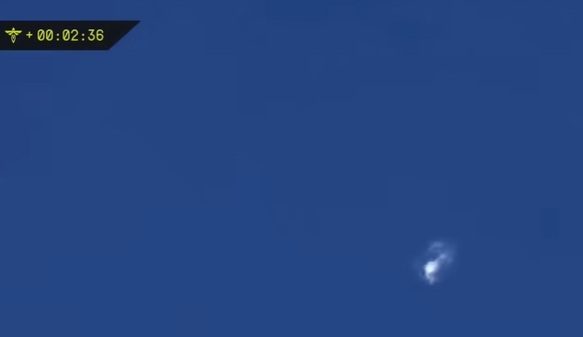While quite small, the IAC’s exhibition of stands had plenty of “big players”, such as Lockheed Martin, Boeing, SpaceX and DLR. The largest and most impressive of the stands was probably Lockheed Martin’s, with suspended models ranging from the Orion capsule to its A2100 communications satellite designs.
Lockheed Martin was keen to mark its progress. At a press lunch, Lockheed Martin was keen the emphasise that although the Boeing/Lockheed Martin joint venture, ULA, had done a deal to develop the BE-4 engine with Blue Origin, Aerojet Rocketdyne’s AR-1 was still in the running as a possible replacement for the RussIan RD-180 for the follow-on launch vehicle to the Atlas V.
Lockheed Martin gave an update on its project to provide Wideband Code Division Multiple Access (WCDMA) latitude voice and data communications to the US military. The project uses a A2100 bus MUOS satellites in geostationary Earth orbit (GEO). So far signals have been received at 85o North.
Such locations are traditionally difficult to reach using the beam footprints from GEO orbits. Usually such communications require slow-moving satellites in Molniya style orbits “hanging” over the polar region of the Earth, or via polar low-Earth-orbiting networks of intercommunicating satellites such as Iridium.
On commercial manned spaceflight, Lockheed Martin continues to back several of the runners. Its joint firm with Boeing, ULA, supports flights of the Boeing’s CST-100 capsule design with its Atlas V rockets, as it is with the Sierra Nevada Corp-led team that is developing Dream Chaser, despite that team not winning any more NASA commercial crew money.
With respect to manufacturing technology, Lockheed Martin is excited about the prospect of 3D printing. Dr Ray Johnson, Chief Technology Officer, said: “In most cases the quality will be the same” as types made traditionally. However, the system will streamline manufacturing and testing, allowing engineers effectively to build the required components as they go.
UK Pavilion stands out
Punching way above its weight in terms of visual appeal was the stand from the United Kingdom. In fact, this was a group of company stands led by the UK Space Agency and the British Interplanetary Society, but unified under a common identity. Apart from the referendum threat that Scotland would make the Union Jack emblems redundant (we might have had to paint out the “Scottish” blue bits) the visual impact of the flags won plaudits.
Seradata was proud to be part of it, and received a lot of interest as a result.
Most eye-catching of the exhibits on the UK Pavilion was the Universal Space Interface Standard (USIS) Association docking ring, which is proposed as a large diameter common docking system standard.
Other spacefaring nations were strongly represented, including China, South Korea, Japan, South Africa – and, of course, Canada.
It was important that Israel put on a good show given that next year’s IAC is in Jerusalem. As such Israel had perhaps the best spacecraft model on display with IAI’s Techsar radar satellite. While Guadalajara in Mexico is the venue for IAC 2016, in the committee voting this year, Adelaide, Australia won the hosting rights for IAC 2017.
A lot of the stands held drinks receptions to drum up support – though your refreshments were usually at the price of being advertised to by the exhibitor – either verbally or with leaflets.






